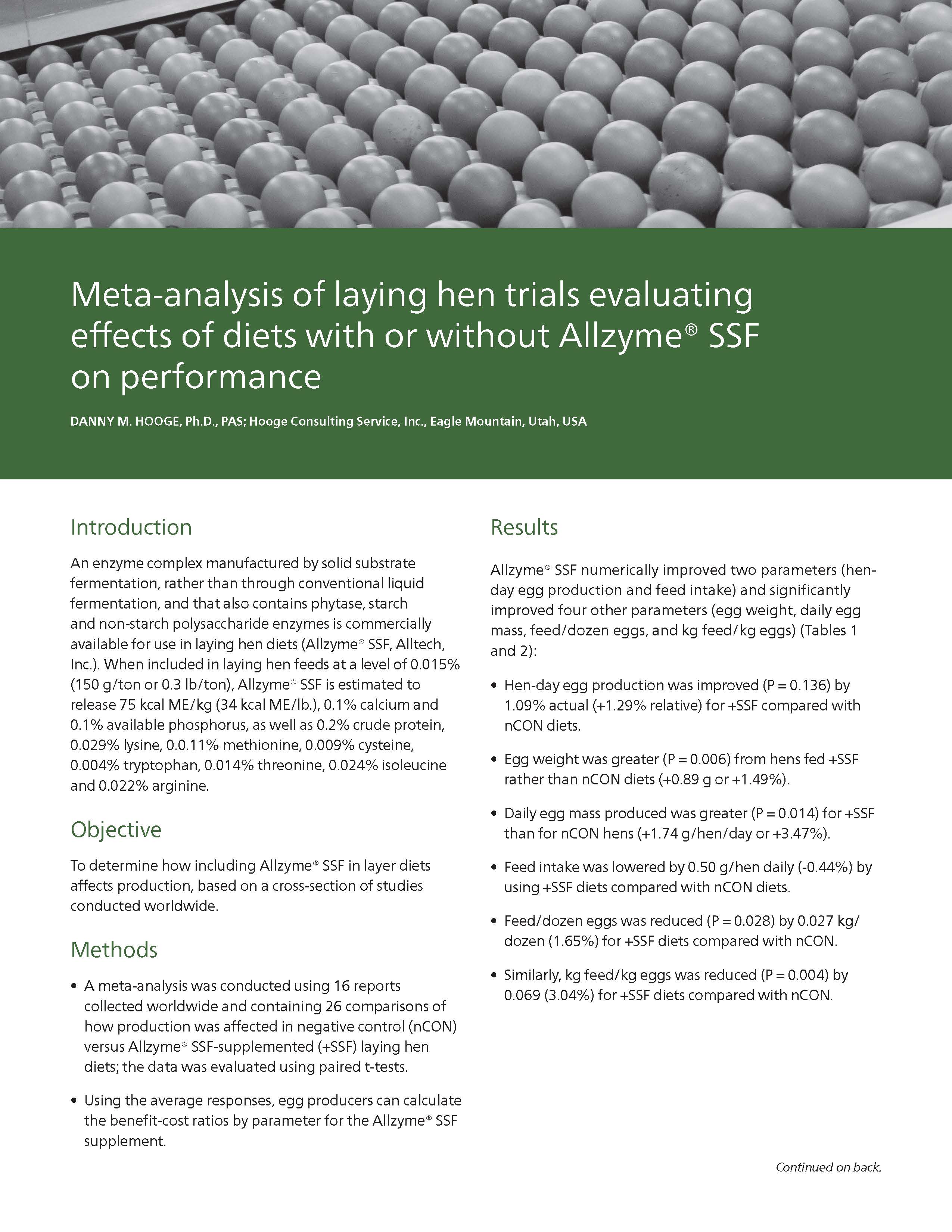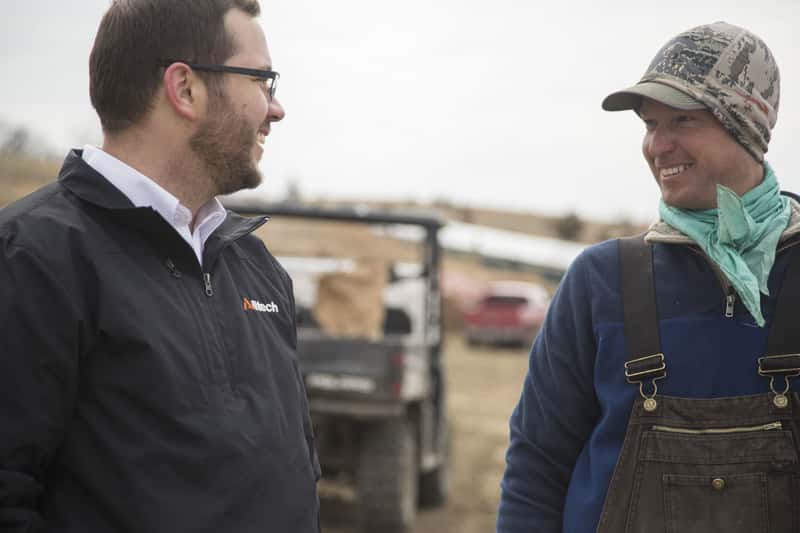If, as the United Nations suggests, agribusiness is Africa’s best hope for economic growth and prosperity, what will it take to achieve broad and lasting success?
“Agribusiness plays a vital role in Africa’s economic development,” said John Young Simpson, director at the Singapore-based Duxton Asset Management, a specialist emerging market agribusiness investment company. “Based on figures from the International Finance Corporation, agribusiness accounts for 25 percent of the continent’s GDP and a significant 70 percent of employment.”
Seventy percent of the world’s uncultivated arable land is on the African continent. And, according to a Cato Institute report discussing what African nations need to do to develop and grow, “between 1990 and 2012, the proportion of the population of African countries with access to clean drinking water increased from 48 percent to 64 percent.”

Yet, despite the seemingly abundant opportunity, noted Simpson, “industrial potential has not been reached, with farm yields among the lowest in the world, and this is in turn due to numerous challenges.”
A “United States of Africa”?: Attempts to bring cohesion to the continent
“The biggest obstacles would be education and lack of infrastructure,” observed Nick Smit, Alltech vice president of Africa and the Middle East.
In fact, in the view of the Stellenbosch-based Smit, a lack of infrastructure is the single most important obstacle to African economic progress.
The continent contains dozens of countries of varying degrees of political, civil, cultural and economic strife and stability, its peoples communicating in more than 1,000 languages.
In 1999, leaders of 53 African nations began attempts to pull it all together. By 2002, they had created a new organization, the African Union (AU), to succeed a foundering Organization of African Unity (OAU). South Sudan became the 54th member state in the summer of 2011.
Conceived by then Libyan leader Muammar Gaddafi as a "United States of Africa," its structure is loosely modeled on that of the European Union.
The Constitutive Act of the African Union calls for “a culture of good governance, democracy, rule of law and popular participation.” There are plans to establish an African Economic Community with a single currency.
Some critics, pointing out that many AU leaders are the same individuals who presided over the OAU, an organization that became known as the “dictators' club,” question whether the AU can ever be truly effective in bringing the various players of the African continent onto the same page.
“Africa has suffered tremendously from this in the past and continues to suffer, even in times when progress is being made,” observed Aidan Connolly, Alltech vice president and chief innovation officer.
Adapting to the 21st century
“Development of infrastructure is typically a government-level investment,” said Mary Shelman, former director of Harvard Business School's Agribusiness Program. “But it requires a long-term view, which is difficult when governments mostly have short-term orientation.”
And in agreement with Smit, she added, “It’s challenging to see market-driven, private sector solutions if governments can't be trusted to stand by contracts and policies.”
The need for costly pipelines, dams, irrigation systems, highways, bridges and other forms of public infrastructure only mounts, however, as governments become pressed to come to terms with what looms just over the horizon.
“Africa Rising”: The role of agribusiness

“The population of the world is due to increase by 50 percent in the next 30 years, from 6 billion to 9 billion people,” noted Connolly in the white paper “A GLIMPSE™ into the Future: A Lens through Which to Consider ‘Africa’s Rising.’” “Sub-Saharan Africa alone will account for one-third of that growth, as the population more than doubles from over 1 billion in 2013 to at least 1.9 billion in 2050.”
Citing forecasts by the International Monetary Fund, he noted that Africa has averaged GDP growth of 5 percent annually throughout the past decade, “and that pace is expected to continue, with GDP projected to triple by 2030, achieving a sevenfold increase by 2050.”
According to a 2010 report from McKinsey & Co., this recent growth is the result of inflation reduction (dropping from 22 percent in the 1990s to 8 percent in the 2000s), a two-thirds decrease in budget deficits and general institution quality improvements.
Taken in combination, these factors have inspired The Economist magazine to coin the phrase “Africa Rising” to describe Africa’s burgeoning population and economic growth and the implications for agribusiness.
Much of this activity is concentrated in the southern two-thirds of the continent.
“Sub-Saharan Africa has a current food deficit in many countries and the promise of even larger future demand due to population and income increases,” said Shelman.
Anticipating and positioning now to efficiently and profitably meet that near-future explosion in demand may present an opening for smart, sustainable agribusiness.
“I believe very strongly that the number one way to feed people is to have affordable food, and the number one way to produce food affordably is to allow intensive agriculture the opportunity to produce efficiently,” said Connolly.
Africa restructures for more abundant food production
The good news is that these dynamics are increasingly being taken into account as African agriculture is restructured to accommodate rapid growth.
“We have seen the acceptance of the private sector and multi-stakeholder partnerships really take root, as well as the development of lobby and organization bodies such as the Rice Council of Tanzania,” said Simpson. “This is largely attributed to the government-led economic and political reforms thus far, with a recent initiative being the establishment of Africa’s biggest economic bloc that allows for free trade over 26 countries across the continent.”
Shelman adds that there’s been a positive shift from focusing only on improving farming to the development of value chains.
“Focusing solely on increasing supply leads to surplus production, which, in the absence of markets, causes farm-gate prices to fall,” she explained. “We now understand the need to develop markets at the same time as supply so product can be 'pulled' through, enabling prices to hold steady and farmer income to improve.”
Additionally, Connolly noted that “there are some challenges for which agribusiness is actually the best hope for progress, most notably in supply chain management, markets and innovation.”
China as Africa’s deus ex machina?
Simpson, stating that Africa has a potential to meet more than the needs of its own population, cited research at University in Munich supporting a commercially oriented approach to land use, with sub-Saharan regions projected to reap the greatest benefit.
“Crops cultivated on current cropland at locations where they yield the highest profits could boost yields by 30 percent on top of an increase by almost 39 percent from multiple harvests,” he said. “Optimal agricultural practices can lead to a further increase of 80 percent.”
This potential is not lost on China, which is scrambling to manage its own exploding population of middle class consumers.
The result is that even while Europeans and Americans remain cautious, viewing Africa as a troubling source of instability, migration and terrorism, China has started to establish its influence on the continent.
“Dance of the Lions and Dragons,” a study McKinsey & Co. conducted to improve understanding of “the rhythm of Chinese business in Africa,” states that, “In a mere two decades, China has become Africa’s biggest economic partner. Across trade, investment, infrastructure financing, and aid, there is no other country with such depth and breadth of engagement in Africa.”
Since the turn of the 21st century, Africa-China trade has been growing at an annual rate of approximately 20 percent. Foreign direct investment has been even more aggressive, growing at the rate of 40 percent annually, the study observed.
It became even more noteworthy in the first quarter of 2017, when China’s direct investment in Africa soared by 64 percent, according to the Ministry of Commerce of the People’s Republic of China.
China’s foreign direct investment in Africa, according to Simpson, has rapidly diversified to include central government-led, state-owned and private investments. It is both a donor and investor in Africa, he said.
“China has in recent years encouraged public-private partnerships and provided incentives for its agribusiness corporations to invest in African agriculture to develop sustainability, develop markets and expand trade,” said Simpson.
Speaking at a summit in Johannesburg in 2015, Chinese President Xi Jinping said Beijing would plough $60 billion into African development projects.
According to the Graduate School of Business at the University of Cape Town, Xi’s pledge has been materializing. Trade and investment deals between Chinese firms and African countries include:
• A $300 million highway renovation project in Nigeria.
• A $230 million ferrochrome mine and smelter project in South Africa.
• A $200 million copper project in Zambia.
• A $60 million textile factory in Sudan.
• A $55 million cement factory in Cape Verde.
• A $30 million contract to build a telephone network in Ghana.
• A $5 billion China-Africa Development Fund administered by the China Development Bank.
• $2 billion in export credits and $3 billion in preferential buyers’ credits.
What drives China’s interest in Africa?
There are competing views about what motivates the aggressive scale and pace of China’s heightened presence on the African continent.
While China has supported many of Africa’s most ambitious infrastructure developments in recent years, Shelman is wary.
“Chinese business interests, which could potentially be proxies for Chinese government interests, could have enough investing power and political will to help address the infrastructure problems,” she said. “But I would not necessarily view Chinese interests as truly market-driven.”
Shelman’s perception is that “China needs the entire world, including Africa, to produce more so they can buy what they need, when they need it. My view is that their land ownership is an attempt to jump-start African production, and ultimately they may not want to keep these holdings. Others interpret this differently.”
The People's Republic has snapped up about 12 million acres of land to grow grains that get shipped back to China, according to Sara Menker, founder of the agriculture data company Gro Intelligence.
“The world doesn’t know about it because these are really quiet deals,” she told an audience at a Forbes Reinventing America AgTech Summit. “These are large-scale farming operations in sesame, wheat, corn for export to China. It doesn’t really interact with the African farmer. It doesn’t get traded locally. It is purely for Chinese export.”
Offering a competing alternative perspective, the McKinsey & Co. report stated, “around 90 percent of the 10,000 Chinese firms operating in Africa today are privately owned — calling into question the notion of a monolithic, state-coordinated investment drive by ‘China, Inc.’ Although state-owned enterprises tend to be bigger, particularly in specific sectors such as energy and infrastructure, the sheer multitude of private Chinese firms working toward their own profit motives make Chinese investment in Africa a more market-driven phenomenon than is commonly understood.”
African agriculture could be abundant, IF…
According to the 2017 Alltech Global Feed Survey, the last five years have seen growth in the African region outpace the world.
“This year’s growth was over 13 percent,” said the survey of Africa’s 2016 feed production. “Half of the countries grew strongly. Shining stars include Nigeria, Algeria, Tunisia, Kenya and Zambia, all of which saw growth of at least 30 percent.”
The World Bank estimates that African farmers could grow enough food to feed the continent — and generate an estimated $20 billion in earnings for their countries — if policy makers can agree to lift cross-border restrictions and simplify the rules and fees involved in food trade, according to Connolly’s white paper.
It’s a big “if.” The Cato Institute report finds many African countries plagued with regulatory hurdles. For example:
• A study by the Rwanda Ministry of Trade and Industry found that a truck driver traveling the 1,000-mile distance from Kigali to Mombasa, Kenya, must stop at 26 roadblocks and pay bribes (an average of $846) along the way. The study also found that it took 121 hours for drivers to make the trip.
• According to a World Bank economist, southern African truck drivers for supermarkets that cross a border can be required to carry a staggering 1,600 documents with them in order to comply with permitting requirements.
Connolly noted, however, that progress in reducing red tape is being made.
“Rwanda, South Africa and Botswana are now rated as in or near the top 50 (of 189) easiest countries in which to do business, according to the International Finance Corporation,” he said. “However, there is considerable scope for improvement: virtually all of the bottom 20 countries are in sub-Saharan Africa.”
The rapid pace of technological innovation also presents a major challenge to African governments, he said.
“Whether it is approval of a new type of crop protection chemical or regulation of the ownership of data collected in a field, agriculture requires dealing with complex scientific and legal matters,” said Connolly.
This is one area where agribusiness can assist. Agri-scientists are well-positioned to help reduce the scientific gap among industry, academia and government.
Additional applications of agribusiness expertise could address environmental sustainability as well as losses attributed to harvesting techniques, mold, insect and animal infestations in storage facilities, packaging and marketing.
The roadblocks
While Africa’s progress is evident, Connolly cited a formidable litany of continuing obstacles, captured in his GLIMPSE acronym: “government, losses, infrastructure, markets, people, science and the environment.”
What is clear, he noted, is “the central role of government, and indeed, not just mandating things, but also freeing businesses up in order to produce food more economically.”

In Shelman’s view, the opportunities for agribusiness in Africa are many.
“Fresh fruits and vegetables, and products like citrus and avocados that can be exported to Europe and other countries, can command strong prices if the transportation is available,” she said.
“The next opportunity,” in her view, “is to develop products for local markets, such as processing tomatoes in Nigeria and rice that can be substituted for imports.”
Meats and dairy, she said, “are more challenging due to the need for cold chain and processing capacity, but those are coming as the infrastructure develops.”
Back to the days of Alkebulan: Africa as our new “Garden of Eden”
Africa was known in ancient days as Alkebulan, meaning “mother of mankind” or “Garden of Eden.” Could its former name designate its destiny?
Time will tell.
The potential of the African continent is quite clear, yet the challenging impediments to its realization are many. But, keep watching. There is no doubt today that continent-wide change is not only coming — it’s already underway.




















